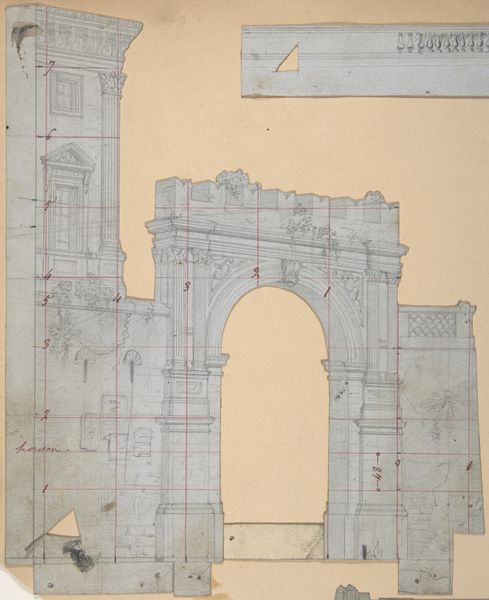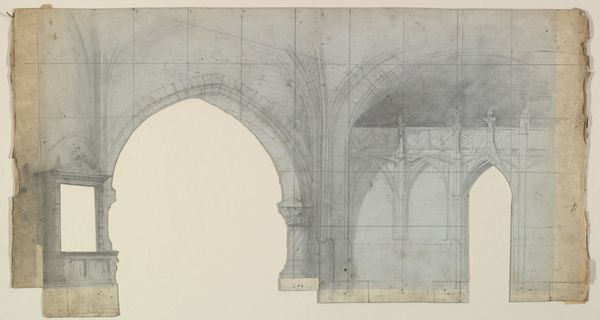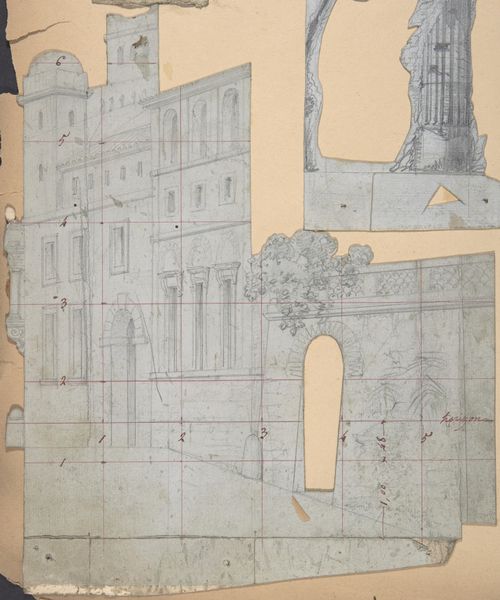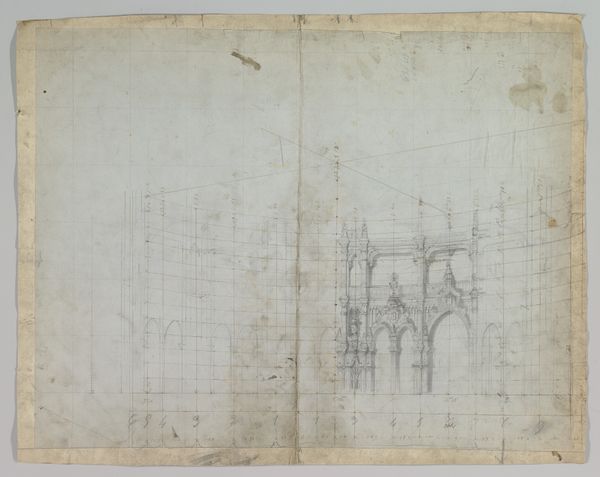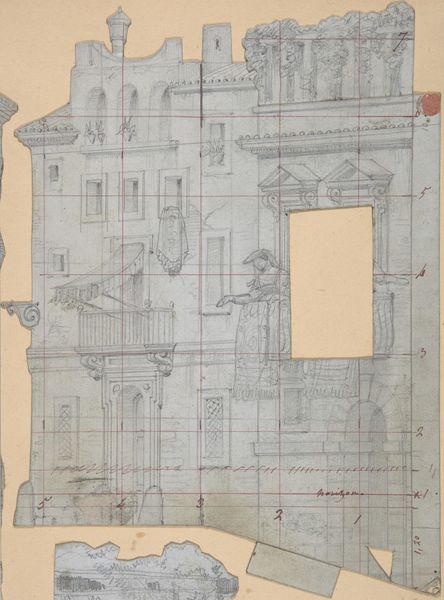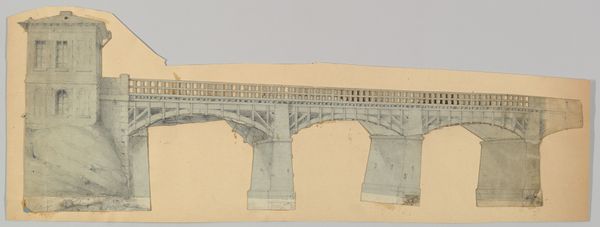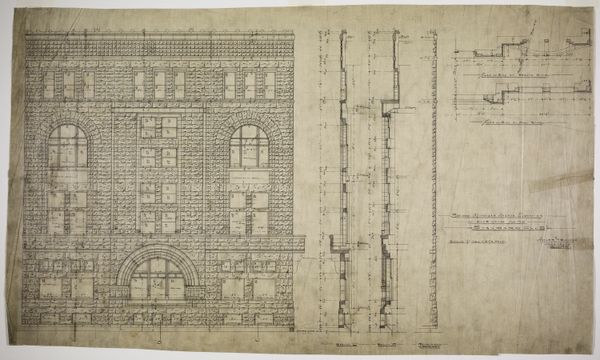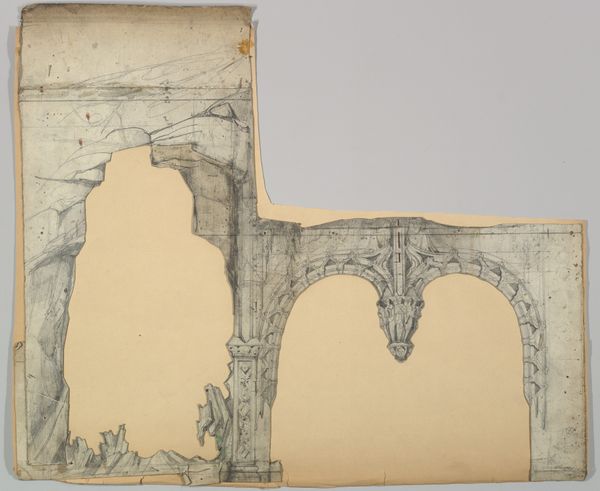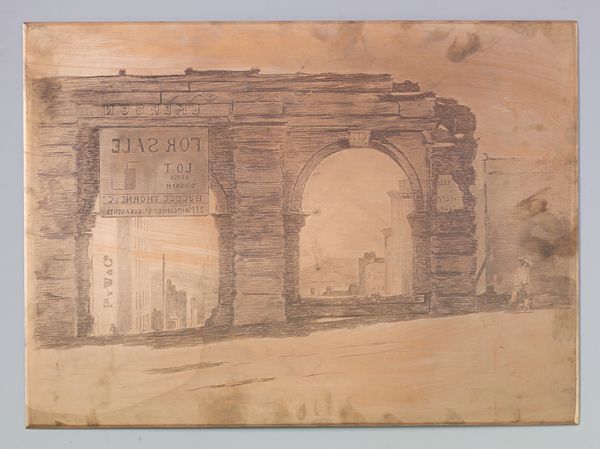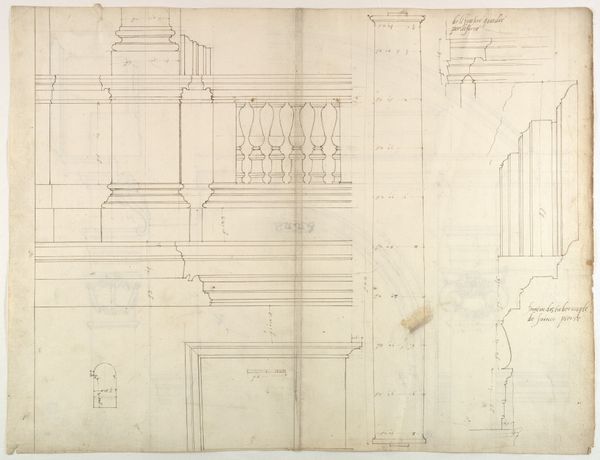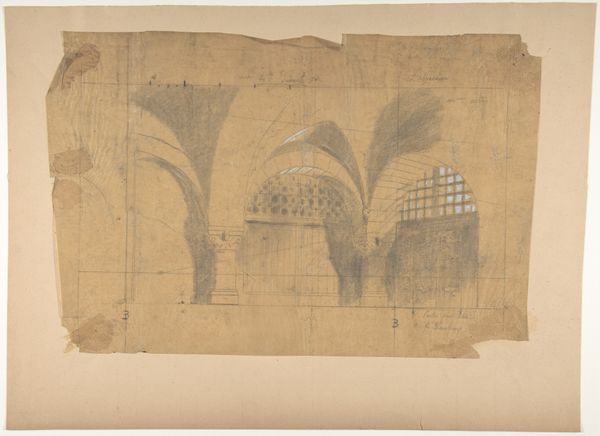
Design for a Stage Set at the Opéra, Paris 1828 - 1890
0:00
0:00
drawing, print, pen
#
drawing
# print
#
coloured pencil
#
pen
#
cityscape
#
history-painting
Dimensions: Irregular sheet: 14 5/8 x 18 3/8 in. (37.1 x 46.7 cm)
Copyright: Public Domain
Curator: So, this is Eugène Cicéri's "Design for a Stage Set at the Opéra, Paris," likely created between 1828 and 1890. We see a delicate construction using pen, colored pencil, and possibly other drawing mediums. Editor: It feels fragile, doesn’t it? Like a dream fading at the edges. There's something inherently theatrical, of course, being a stage design, but even more than that, the raw sketch feels closer to the kernel of imagination than any finished set ever could. Curator: Exactly! It reveals the labor involved in illusion-making. The gridlines give it away; this wasn’t pure artistic inspiration but calculated work. Cicéri, a prominent stage designer, produced these drawings often for Opera productions. They offer insight into the social structures and production methods that underpinned the opulent theatrical experiences enjoyed by Parisian audiences. Editor: The bareness against the imagined grandeur! Look how light finds its way through the proposed archways. There is no clutter yet only possibility. The work holds a poignancy: the artist rendering architecture which holds more space and possibility than anything physically realised. I would guess his dreams for the sets far surpass any eventual construction. Curator: I think the use of colored pencil alongside pen emphasizes its status as a working document, materials chosen for utility and speed, not necessarily permanence. That informs its rough, immediate beauty; there is no time for perfection only rapid execution. It provides another facet to stage design where artists needed to be flexible as the vision materialized to the stage. Editor: I keep returning to how incomplete it is. Almost resisting solidity, but yet this design holds the promise for crowds, costumes and drama. Cicéri allows us entry into a hidden place from where all theatrical magic unfolds. In all it makes me think about what it means to create anything knowing it exists ephemerally – set for something more monumental or important. It challenges how to judge art within commercial enterprise or necessity; but what is clear that the piece reveals process openly – as inspiration unfurls almost on the edge. Curator: Indeed, this raw aesthetic resonates, laying bare the usually invisible machinery behind grand spectacles and how so often ‘sketches’ possess even stronger qualities than finished products.
Comments
No comments
Be the first to comment and join the conversation on the ultimate creative platform.
